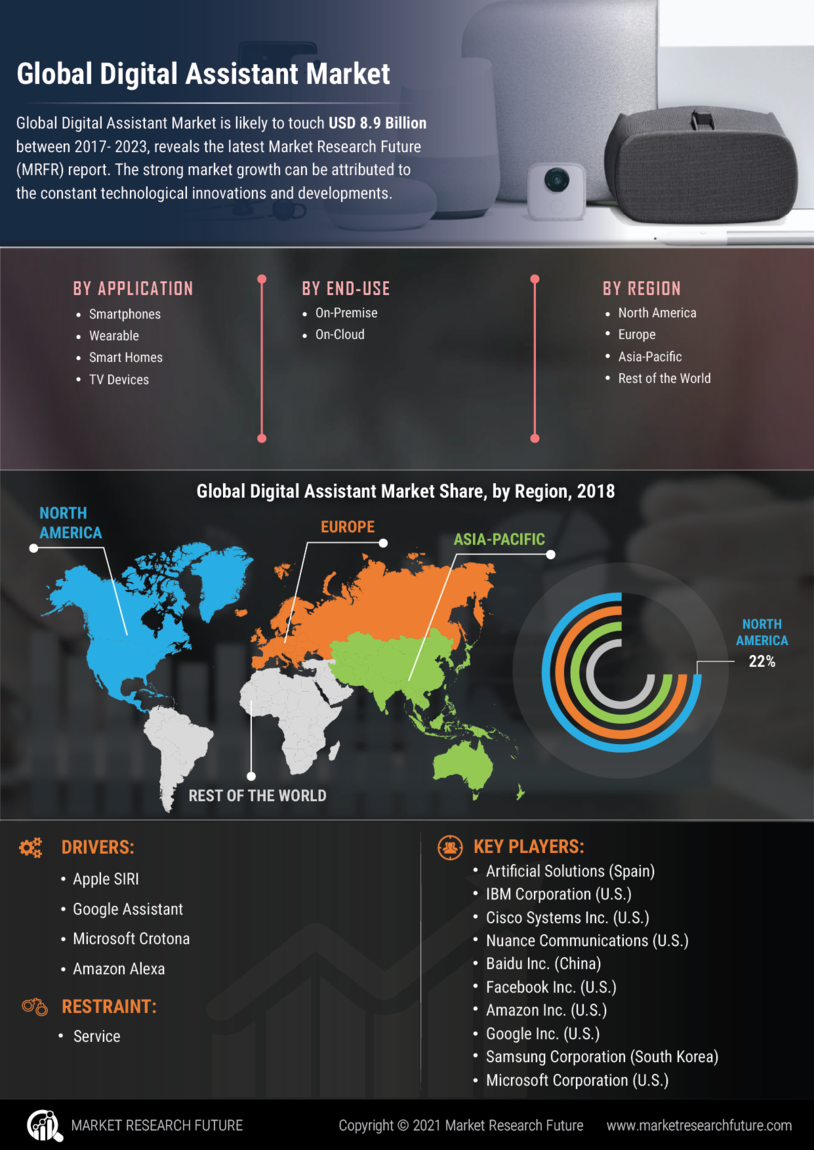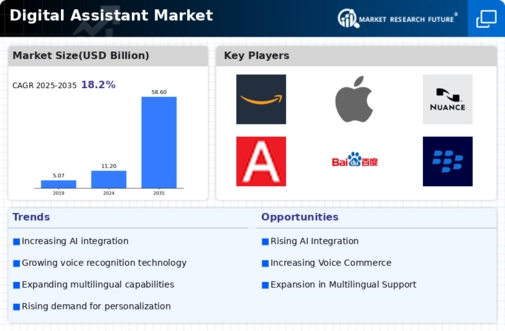The Digital Assistant Market is currently characterized by intense competition and rapid innovation, driven by advancements in artificial intelligence and machine learning technologies. Major players such as Amazon (US), Apple (US), and Google (US) are at the forefront, each adopting distinct strategies to enhance their market presence. Amazon (US) focuses on expanding its Alexa ecosystem through partnerships with various smart home device manufacturers, thereby solidifying its position in the home automation segment. Meanwhile, Apple (US) emphasizes privacy and user experience in its Siri platform, which appears to resonate well with consumers increasingly concerned about data security. Google (US), on the other hand, leverages its vast data resources to enhance the capabilities of Google Assistant, integrating it seamlessly across its suite of services, which likely strengthens user engagement and retention.
The competitive structure of the Digital Assistant Market is moderately fragmented, with a mix of established giants and emerging players. Key tactics employed by these companies include localizing manufacturing to reduce costs and optimize supply chains, which is particularly relevant in the context of global economic fluctuations. The collective influence of these major players shapes market dynamics, as they continuously innovate and adapt to consumer preferences, thereby driving overall market growth.
In August 2025, Amazon (US) announced a strategic partnership with a leading smart appliance manufacturer to integrate Alexa into their product line. This move is significant as it not only expands Alexa's reach but also enhances the functionality of smart appliances, potentially increasing consumer adoption rates. Such partnerships are indicative of Amazon's strategy to create a more interconnected smart home ecosystem, which could lead to increased customer loyalty and market share.
In September 2025, Apple (US) unveiled a new feature for Siri that allows for more personalized interactions based on user behavior and preferences. This development is crucial as it aligns with the growing consumer demand for tailored experiences in digital assistants. By enhancing Siri's capabilities, Apple (US) aims to differentiate itself in a crowded market, potentially attracting users who prioritize personalization and privacy in their digital interactions.
In October 2025, Google (US) launched an updated version of Google Assistant that incorporates advanced natural language processing capabilities. This update is particularly noteworthy as it enhances the assistant's ability to understand and respond to complex queries, thereby improving user satisfaction. Such technological advancements are likely to position Google (US) as a leader in the digital assistant space, as they continue to push the boundaries of what AI can achieve in everyday applications.
As of October 2025, the Digital Assistant Market is witnessing trends that emphasize digitalization, sustainability, and AI integration. Strategic alliances among key players are increasingly shaping the competitive landscape, fostering innovation and collaboration. Looking ahead, it appears that competitive differentiation will evolve from traditional price-based strategies to a focus on innovation, technological advancements, and supply chain reliability. Companies that can effectively leverage these trends are likely to secure a competitive edge in this dynamic market.


















Leave a Comment